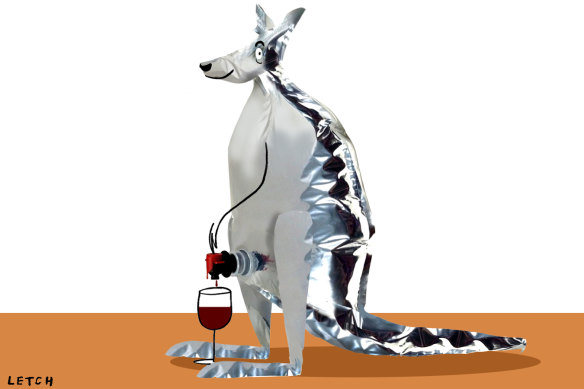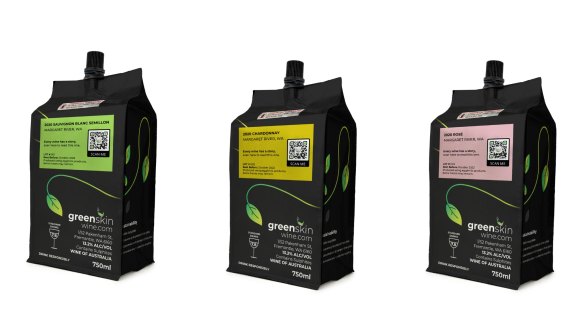What’s the shelf life of wine in soft packs?
My local bottle-o now sells wine in soft packs, similar to those that supermarket soups come in. Do they compromise the shelf life of the wine?
−P.H., HEATHCOTE, NSW
The jargon for this container – a soft pack that has a tap in the base but no cardboard box like the well-known “wine cask” – is “pouch”. And yes, there appears to be a trend to package higher-quality wines this way.

The pouches tend to be decorated with attractive designs and are usually either 750ml or 1.5 litres in capacity. Given that they’re lightweight, space-saving, unbreakable and malleable (for ease of packing in your picnic basket come the warmer weather), they’re certainly a good alternative to the regular 750ml glass bottle. And then there’s the fact that, as the pouch empties, the tap prevents destructive air getting to the wine.
Some labels – Greenskin, for example, which offers a range of Margaret River varietal wines – incorporate a recycling program. When you buy a six-pack of pouches, a postage envelope is included, inviting you to return the empty envelopes to the maker free of charge.
I’ve tasted a number of Greenskin wines, not to mention others produced by Trentham Estate under its Three’s A Crowd brand, and some French wines with the too-cute name Bijou Le Chic. All passed muster, although the French wines were rather bland.

You do pay, though. Three’s A Crowd’s wines cost $16 for 1.5 litres, Bijou Le Chic are $35 for 1.5 litres, and Greenskin wines vary from $18 to $33 for 750ml (the sauvignon blanc and sem-sauv are the cheapest, the cabernet sauvignon the dearest).
Others include Grant Burge Ink Shiraz ($33 for 1.5 litres) and Cupio pinot noir and rosé “bagnums” ($28 for 1.5 litres at Dan Murphy’s).
As for their shelf-life, Greenskin’s remarkable 2020 cabernet merlot, which I tasted last December, had a best-before date of May 2024. From this, we can assume a life of 18 months from when I tasted it.
Owner Mike Davies says the best-before dates have turned out to be too conservative, hence a 2022 sauvignon blanc I tasted in June just had a packaging date of January 2023, the date it went into the pouch; the winemaker leaves it to the consumer to judge whether the product is still good to be drunk. Davies says two years on the shelf haven’t harmed any of his wines.
No one, as yet, is recommending that you cellar pouches.
The best recipes from Australia's leading chefs straight to your inbox.
Sign up